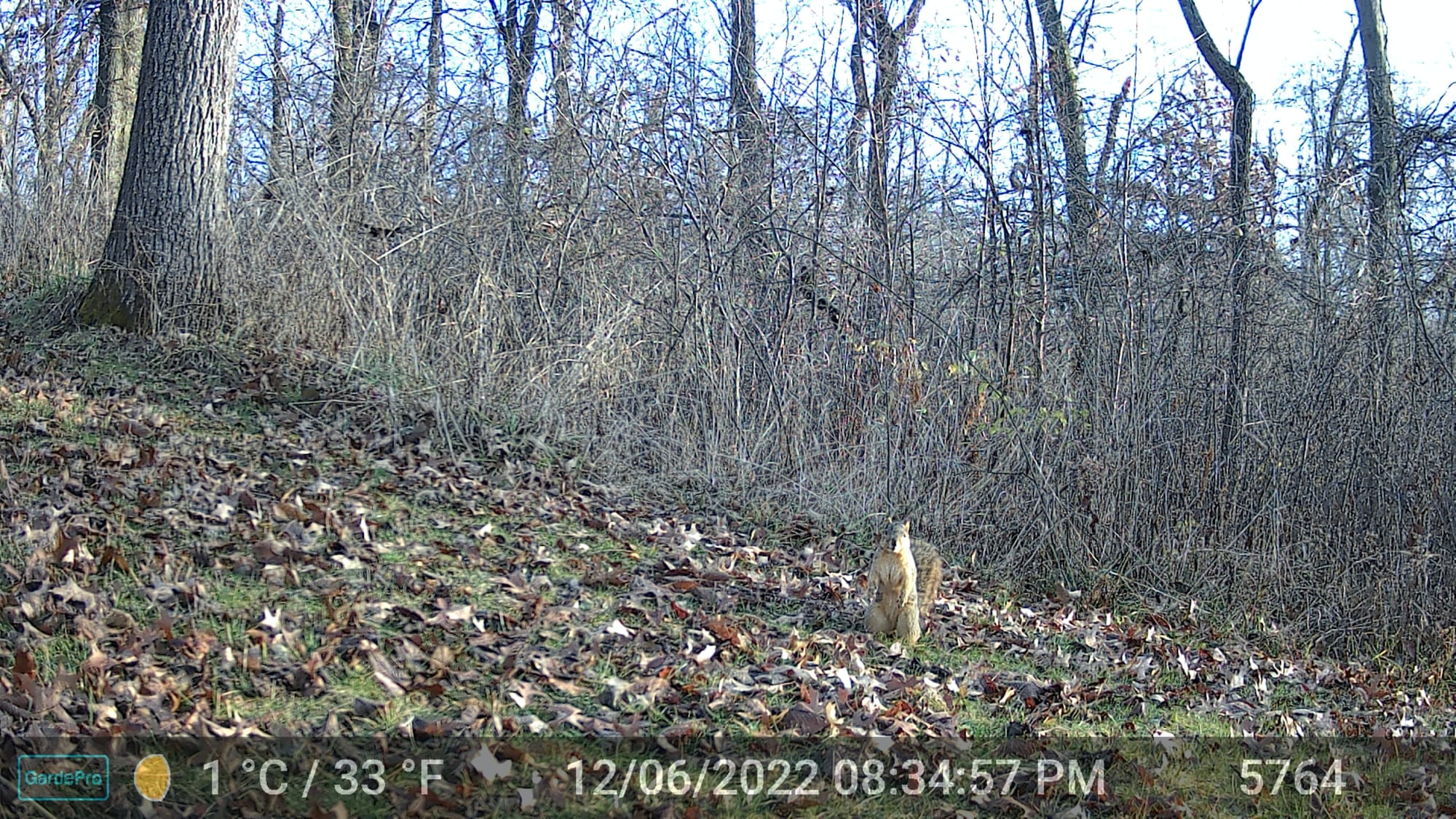Squirrels are abundant in central Ohio. I am not sure if this is the same squirrel in the pictures or several different ones. I like the picture at the top of the blog because it looks like the squirrel is staring at me.
Again, the dates and times are incorrect on the field camera.

Enjoy the squirrel video below:

History of Squirrels:
Squirrels belong to the Sciuridae family, which includes tree squirrels, ground squirrels, chipmunks, marmots (like groundhogs), flying squirrels, and prairie dogs. They've been around for over 40 million years, with fossils dating back to the Eocene epoch. Originally native to North America, Eurasia, and Africa, they've spread to other continents due to human activity. Known for their speed and agility, squirrels excel at evading predators and moving through their environment.
Squirrel Food:
Tree squirrels love munching on nuts like acorns, walnuts, and hazelnuts, along with seeds, fruits, fungi, and sometimes insects or bird eggs. Ground squirrels prefer grasses, roots, seeds, insects, and even small vertebrates. Flying squirrels enjoy mushrooms, lichens, sap, bird eggs, and small insects, especially at night. Many squirrel species also store food to retrieve during the winter months.
Life Cycle
Squirrels typically mate in late winter to early spring, with some experiencing a second cycle in late summer. Their gestation period lasts about 40–45 days, resulting in litters of 2–8 kits or pups. Born blind and hairless, the babies stay in the nest for about two months. Squirrels reach sexual maturity at 10–12 months. In the wild, their lifespan is usually 3–6 years, often shorter due to predators, but in captivity, they can live over 10 years.
Fun Facts about Squirrels
Memory Pros: Squirrels are great at remembering where they bury nuts, using spatial memory and landmarks.
“Fake Burying”: To mislead potential thieves, they sometimes pretend to bury nuts while hiding them elsewhere.
Flying: Flying squirrels don’t actually fly—they glide using a special membrane called a patagium.
Growing Teeth: Like other rodents, squirrels have continuously growing front teeth that need to be worn down by gnawing.
Urban Adaptation: They’ve adapted remarkably to city life, often outsmarting bird feeders and navigating traffic.

Conclusion:
Squirrels are very interesting creatures. Usually, squirrels are noisy. They sound like a lot bigger animals crashing through the forest.




